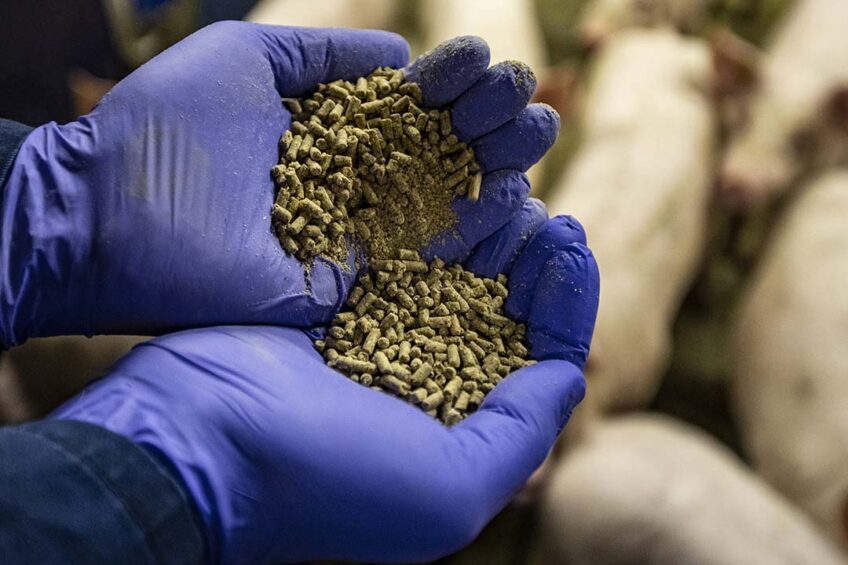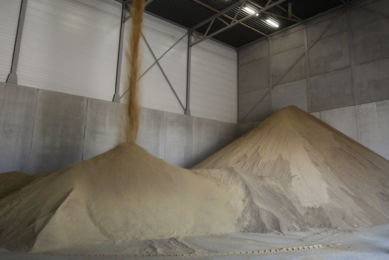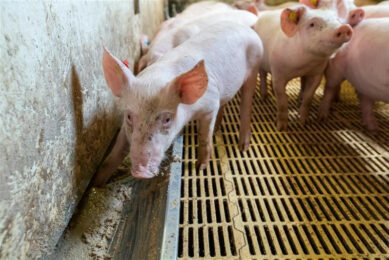5 factors regulating feed efficiency in pigs

In intensive swine production systems, feed comprises 60-70% of the total cost of pork production, and within feed, energy alone represents 50% or more of the total cost. Feed efficiency is key.
Energy is a critical dietary component necessary for physical maintenance and growth. Feed efficiency signifies the efficiency with which the pig utilises dietary nutrients for maintenance, lean gain, and lipid accretion. In addition, feed efficiency strongly influences financial returns due to its close association with feed costs. Therefore, it is essential to have a deep understanding of factors regulating feed efficiency in pigs.
 Diet components
Diet components
Nutrients and their metabolites regulate feed efficiency through direct or indirect endocrine secretions that interact with local and central neural processes. Carbohydrates, fats, and proteins directly affect the release of hormones from the gut tract and pancreas, thus regulating feed efficiency.
Increasing dietary fat improves feed efficiency; however, it is associated with increased feed costs. Energy density is an important determinant of average daily feed intake. Reducing dietary energy content increases a pig’s feed intake to maintain constant daily energy intake. On the other hand, the increase in absorption of high energy diets reduces feed efficiency. Fibrous feedstuffs increase weight and volume of the whole gut, thus improving feed efficiency of young pigs.
 Amino acid balance
Amino acid balance
Amino acid profile and ratios are important to maximise lean growth and improve feed costs. Severe deficiency in limiting amino acids such as lysine or an excessive supply of total protein or some essential amino acids have negative impacts on feed efficiency. High-protein diets limit voluntary feed intake in growing pigs due to imbalance among the less-limiting amino acids such as leucine, isoleucine, valine, phenylalanine, and tyrosine.
Studies have shown that an optimum dietary tryptophan content enhances feed efficiency in piglets due to its influence on appetite-stimulating hormones, such as serotonin and ghrelin. Low-protein diets deficient in valine decreases feed intake, growth, and feed efficiency. In addition, valine deficiency accompanied by an excess supply of leucine reduces feed efficiency and growth performance more severely.
 Feed processing
Feed processing
Feed processing technology stimulates feed intake and affects feed efficiency. A decrease in feed particle size increases the surface area of the grains and improves nutrient digestibility and hence feed efficiency. Normally, every 100-micron reduction in particle size improves feed efficiency by 1%. Although, if the feed grind is too fine, the feed processing cost and the risk of gastric ulcers will increase.
Pelleted food has inconsistent impacts on the feed efficiency of weaning pigs. Some studies have shown that pigs fed pellets may achieve a higher feed intake in the first week after weaning, whereas others showed a feed intake reduction with pellets. Pellet quality, such as durability and hardness, improve feed efficiency in growing-finishing pigs, which may largely be attributed to reduced feed wastage and improved nutrient digestibility.
 Health status
Health status
A pig’s health status is an important determinant of productivity and feed efficiency. Sick animals are unable to utilise nutrients for growth, but instead allocate energy to fight disease. Normally, a 1% increase in mortality reduces feed efficiency by 0.5 to 0.8%. In addition, immune system activation due to inflammation during a disease challenge affects feed intake and nutrient utilisation and reduces feed efficiency.
 Environmental temperature
Environmental temperature
Heat exchange between pigs and their environment affects feed efficiency. As ambient temperatures increase, the feed intake of pigs decreases. However, after the initial period of heat stress, pigs can adjust to hot temperatures and the anorexic effect of thermal stress is reduced. When ambient temperatures decrease, heat loss to the environment will increase, thus additional heat production is needed to compensate for the heat loss. As a result, feed intake increases and feed efficiency decreases. Although, pigs exposed to cold stress will not always increase feed intake to maintain the rate of energy deposition that would occur in the body under thermal neutral conditions.
Concluding remarks
Feed efficiency is an important factor affecting the profitability of the swine industry. Factors including diet component, amino acid balance, feed processing, health status, and environmental temperature affect feed efficiency. However, further research is needed to investigate the effect of interaction between these factors on feed efficiency in commercial systems.
* References are available upon request











